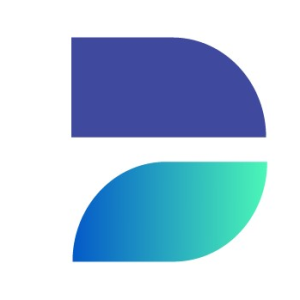What is our primary use case?
We use it for scrambling personal data. That's the most important use case that we have. We both have SAP and non-SAP applications.
How has it helped my organization?
Two or three years ago, before DATPROF, we did not have the ability to scramble or mask data in our non-SAP applications. Doing so was only a dream. Today we are confident that our customers' sensitive data is not in anybody else's hands. Production users, even developers, were usually able to see personally identifiable data in test environments because they have super-user access. But now we don't have that situation anymore. Anybody who logs in to test data only sees scrambled data. They don't see the real data.
Overall, DATPROF has simplified our test data operations, absolutely. Before we had the ability to scramble, we did not copy our production data into our test system because we didn't have any way to protect our data. Today, because we have a scrambling solution, we are able to do refreshes frequently, meaning production data comes into the test system very frequently. That makes it possible for the testers to do testing with the real production-like data. As a result, our testers are able to test efficiently and that helps us avoid production incidents.
What is most valuable?
The most valuable feature is that it's easy to use. We were using it for Microsoft Dynamics Navision and at a later point in time we had to use it for JD Edwards but we didn't have to go to any other solution. We were able to quickly port a JD Edwards application into the DATPROF solution and we were able to scramble the data in that application. It's a single tool that helps us to do that across applications.
And the masking templates are reusable. Microsoft Dynamics Navision has been implemented in at least 19 different operating companies, within our company. It goes into each of the tenants and then it runs it. Without this feature, we would be spending quite a lot of time customizing it individually at each location. The first time you set it up, it takes a lot of time. But if we have one template that can be reused, it becomes fairly simple for us to quickly adapt it.
As we speak, we are doing a scrambling setup for one of our large applications. It doesn't take much time. Once you configure it, it becomes a routine. You just press the button and it takes care of it.
There is an integration with a product called EPI-USE Labs Data Secure. To integrate these two, we have another product called Symphony, which orchestrates the data masking between SAP and non-SAP applications. SAP masks the data and then Symphony picks it up. Symphony triggers the masking in EPI-USE Labs Data Secure and it takes the masked data reference and passes it onto DATPROF. DATPROF picks up the baton and runs the scrambling using the same ruleset. I have not seen any other solution that makes it easier for scrambling between SAP and non-SAP applications. This is definitely important. Our testers would go crazy if the data in our SAP application and our non-SAP applications looked different.
What needs improvement?
They could improve the solution by expanding the APIs. If there were options to integrate it with other solutions, that would help.
For how long have I used the solution?
I've been using DATPROF for about two years.
What do I think about the stability of the solution?
The stability is perfectly fine. We run many jobs in parallel but we have not had a situation where it was hanging or not responding.
What do I think about the scalability of the solution?
We are still expanding from Microsoft Dynamics Navision to JD Edwards and we are already talking about expanding it to TIBCO. From that perspective, it is highly scalable.
How are customer service and support?
In our initial days with the solution we used technical support, especially for the integration between SAP and non-SAP. But as we speak, a refresh has just been done and the scrambling is done and we did not raise any tickets during that exercise.
We didn't experience a lot of delays whenever we called them. And they wouldn't say, "We work only on incidents." They're flexible in terms of making sure your situation is taken care of.
How would you rate customer service and support?
Which solution did I use previously and why did I switch?
For SAP applications we have a different product, but for non-SAP applications we didn't have anything and we were looking for a solution that could help us mask or scramble personally identifiable data. That's where DATPROF came in.
One of the reasons we went with DATPROF was the synchronized scrambling for SAP and non-SAP products. That was one of the most important features. That would help us resolve many problems.
How was the initial setup?
I was involved in the initial deployment but it was actually done by DATPROF themselves. We just provided them with guidance on how to navigate within our environment. It was quick and it was not very difficult. We did not have a lot of challenges with the initial onboarding.
It took two to three months because of the coverage we needed. It was not for one system, rather we were deploying it for a large number of operating companies, so the scope was large.
We're not spending a lot on maintaining it and we don't have a dedicated person to maintain it. We get the upgrade packages whenever they come out. Otherwise, I don't think we have raised an incident in the last six months. In terms of maintenance, it's fairly simple.
Which other solutions did I evaluate?
We looked at a few other solutions, but they were either expensive or they were not really out-of-the-box solutions.
Our company used Delphix three or four years ago, but we did not use it for scrambling. We were using it for copying data from production tools, but it was a very expensive solution. That's why we replaced it with other tools like Symphony, DATPROF, and EPI-USE Labs Data Secure. But it's not fair for me to compare them as we are not using the same features in DATPROF that we used in Delphix.
Architecturally, they are completely different. One big important difference is that Delphix works at the infrastructure layer, not really the application layer. DATPROF, on the other hand, works at the application database layer and that is an advantage because we are able to do things ourselves. With Delphix, we had to depend on our hosting provider to support us, which also cost quite a lot of money. With DATPROF, it's more of a self-service. You can do things yourself and you don't have to depend on anybody else.
Also, with Delphix, we only had one refresh, from production to acceptance, in three years. With DATPROF we are doing a refresh every six months. And the scope has increased.
DATPROF definitely saves us money compared to Delphix. From a licensing perspective, there's a huge difference.
What other advice do I have?
My advice is "go for it."
Which deployment model are you using for this solution?
On-premises
*Disclosure: PeerSpot contacted the reviewer to collect the review and to validate authenticity. The reviewer was referred by the vendor, but the review is not subject to editing or approval by the vendor.





